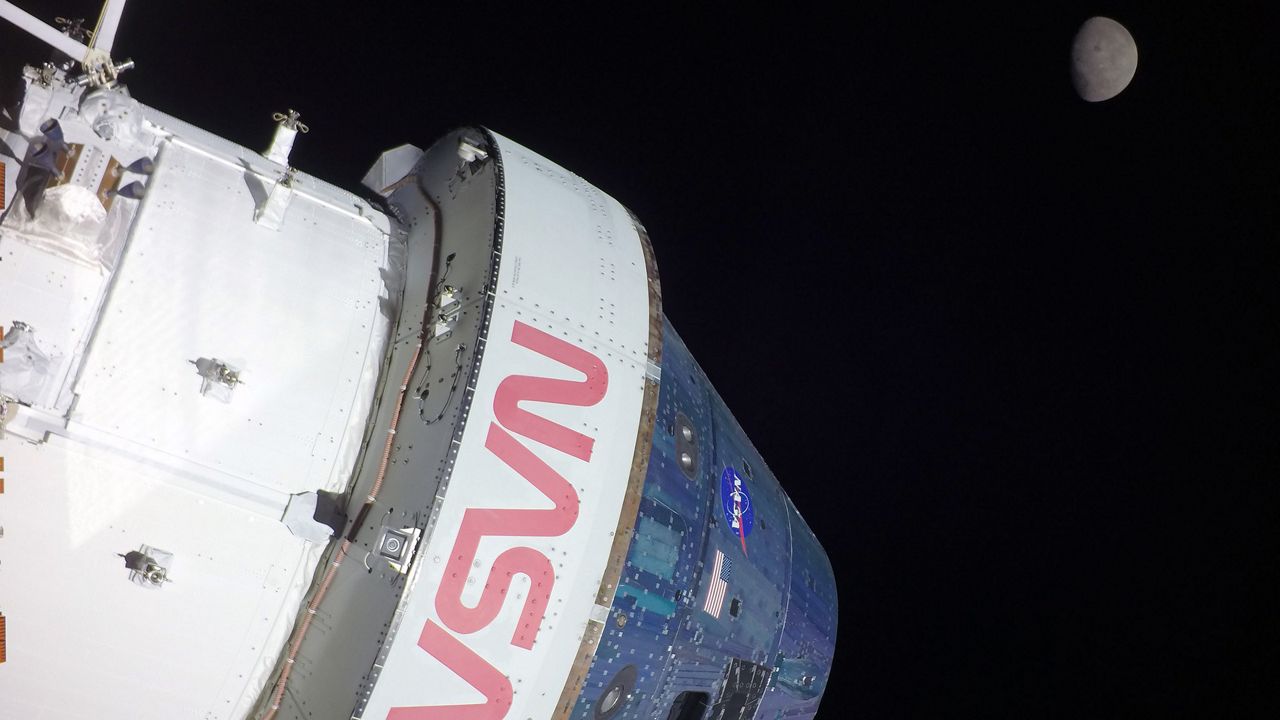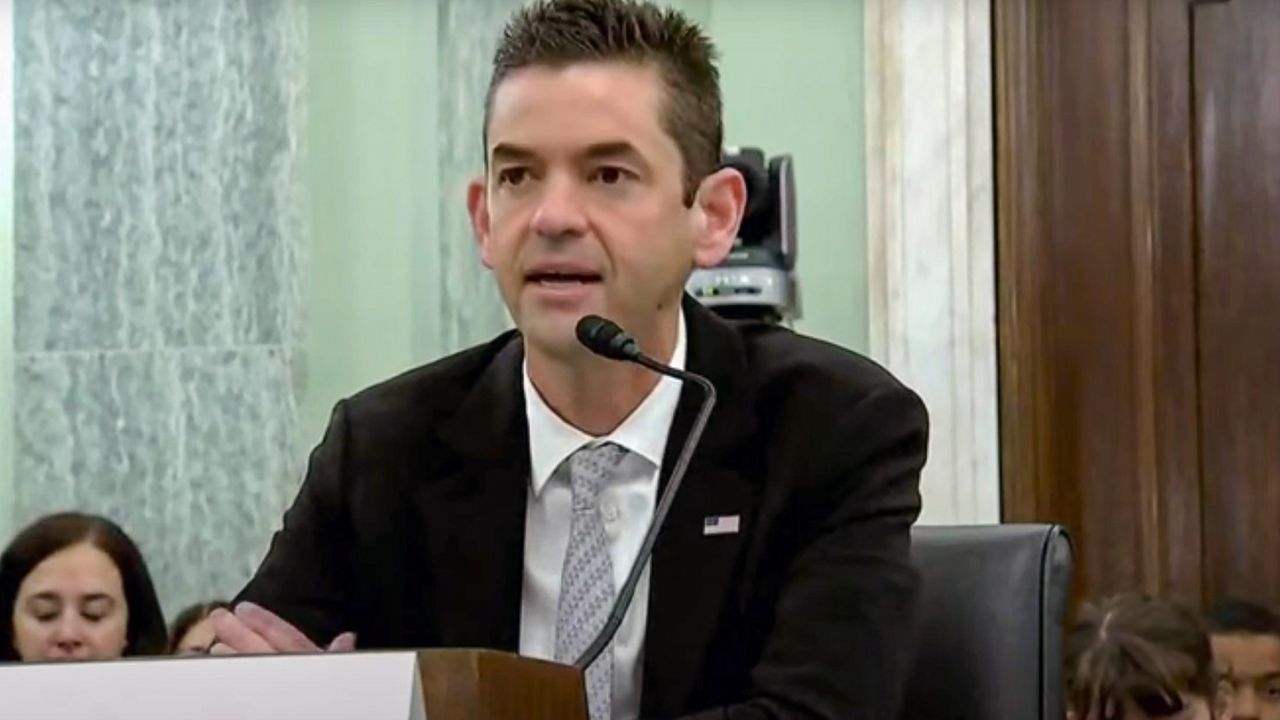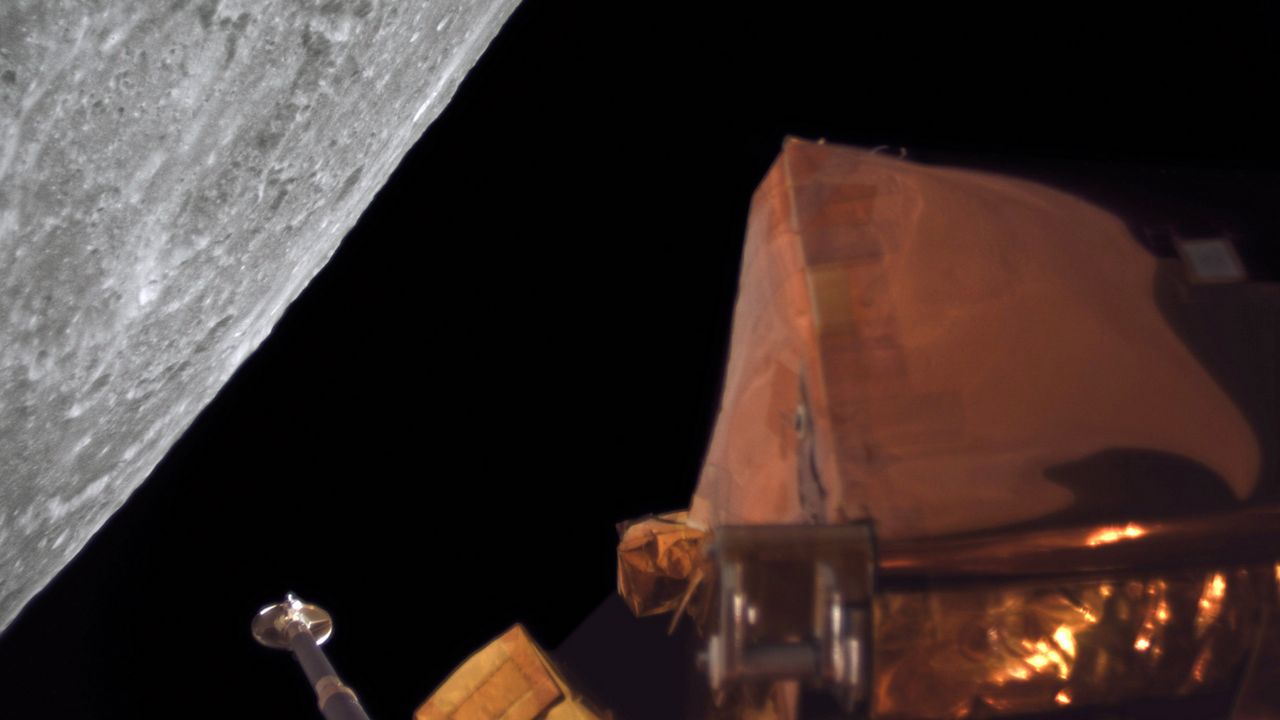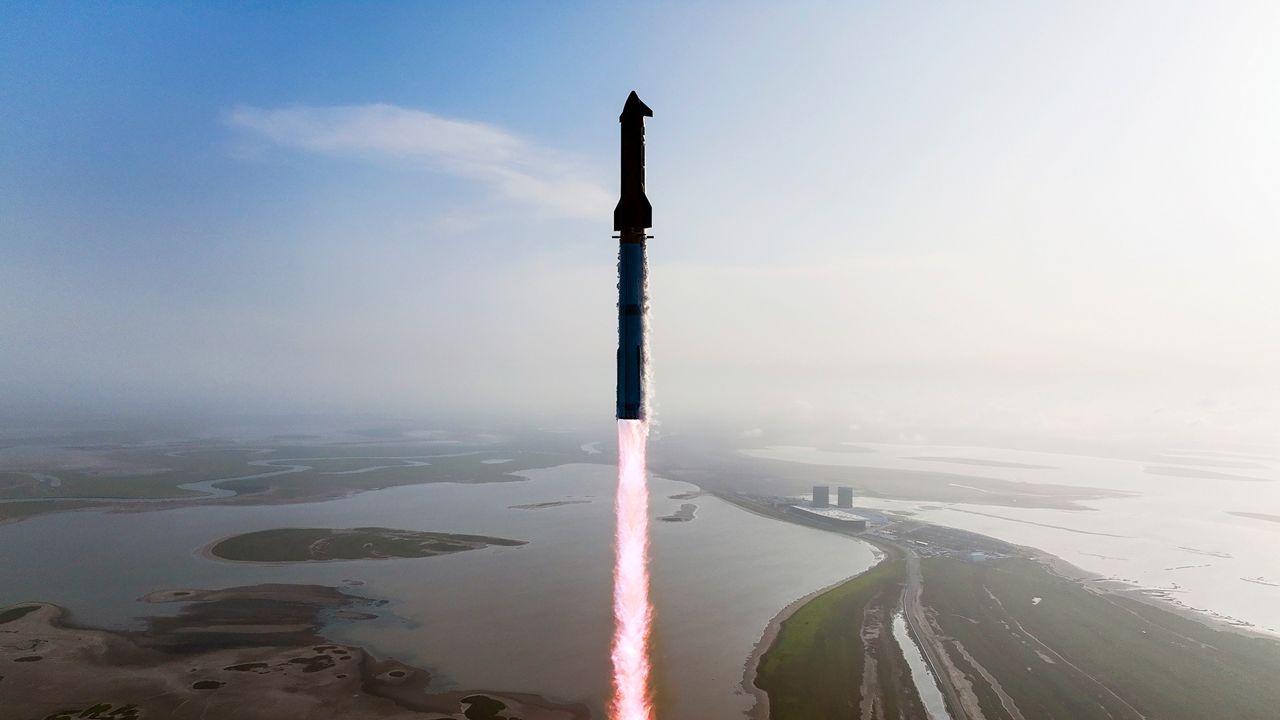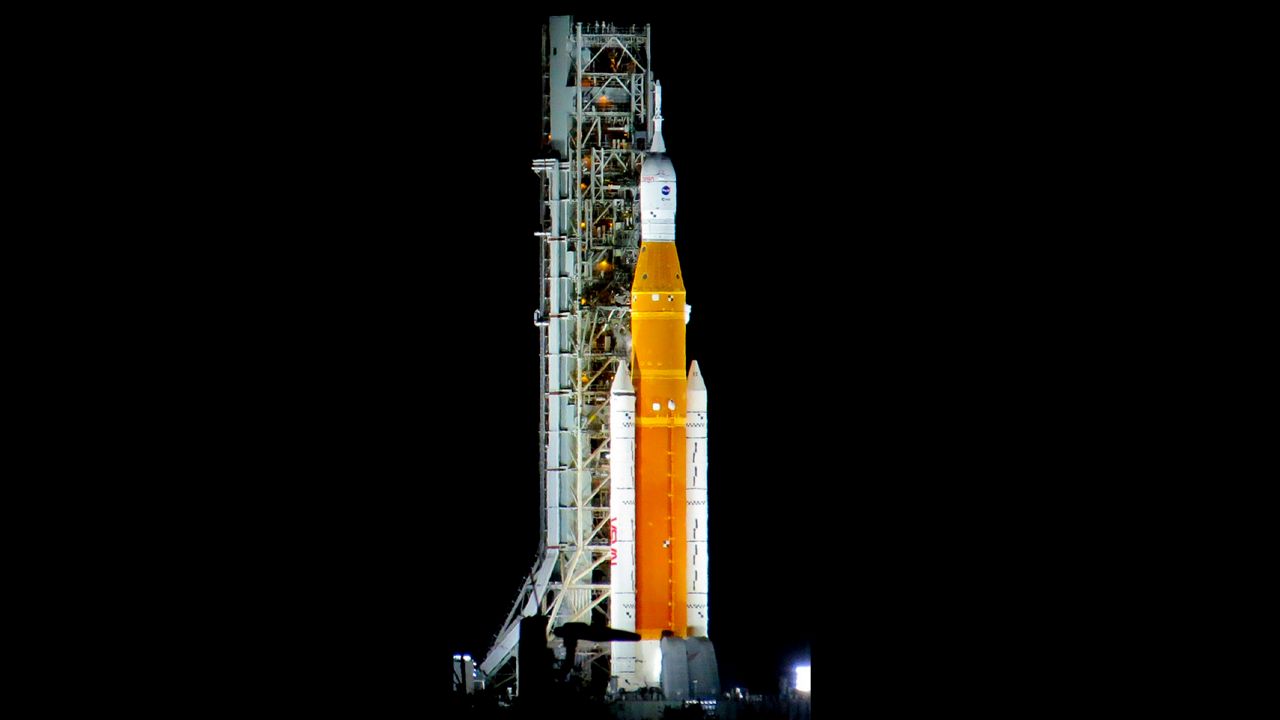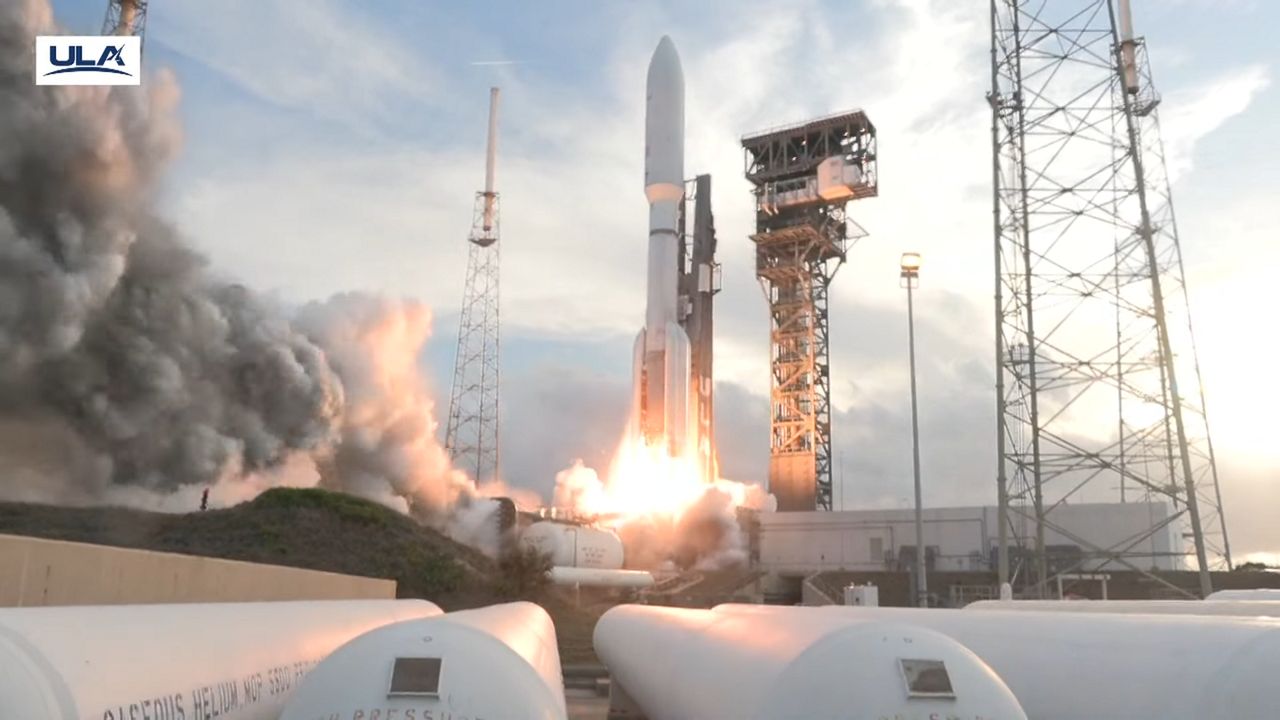CAPE CANAVERAL SPACE FORCE STATION — The heatshield of the Orion space capsule is one of the main reasons why NASA has decided to push back the launch dates for Artemis II and Artemis III moon missions again, said NASA Administrator Bill Nelson on Thursday afternoon.
What You Need To Know
- The Artemis II is now slated for 2026
-
- The Artemis mission’s vehicles are made up of the Space Launch System rocket and the Orion spacecraft
For the second time this year, NASA has pushed back the launch dates for these two crewed moon missions. Both in January and again on Thursday afternoon during a press conference, Nelson cited that the heatshield from the Artemis I mission as one of the main reasons why there has been a delay.
Artemis II was originally set to be launched this November and then in September 2025, but now it is slated for April 2026, Nelson said.
Artemis III has been moved from 2025 to 2026 to now mid-2027.
The Artemis mission’s vehicles are made up of the 322-foot-tall Space Launch System rocket, currently the most powerful one in the world, and the nearly 11-foot-tall Orion spacecraft that will carry humans back to the moon.
In November 2022, NASA launched the uncrewed Artemis I to the moon and it was a test of the Orion’s and SLS’s systems and hardware.
In July of this year, the Artemis II’s SLS rocket’s core stage was delivered to the Kennedy Space Center.
On Thursday, Nelson, NASA Deputy Administrator Pam Melroy and Amit Kshatriya explained that during the 2022 Artemis I mission, the Orion capsule’s heatshield performed in different ways and was shedding in ways that were not expected during its re-entry back to Earth.
A team of experts from various fields determined the root cause of the failing of the heatshield and have come up with a new method to create a better heatshield, explained Kshatriya, the deputy associate administrator for the Moon to Mars Program Office within the Exploration Systems Development Mission Directorate.
“Extensive analysis, including from more than 100 tests at unique facilities across the country, determined the heat shield on Artemis I did not allow for enough of the gases generated inside a material called Avcoat to escape, which caused some of the material to crack and break off. Avcoat is designed to wear away as it heats up and is a key material in the thermal protection system that guards Orion and its crew from the nearly 5,000 degrees Fahrenheit of temperatures that are generated when Orion returns from the Moon through Earth’s atmosphere,” NASA explained in a press release.
The Orion had 1,300 thermal protection system tiles that protected it from the coldness of space to the extreme heat of re-entry.
As Orion returned to Earth, it was moving at about 25,000 mph and it experienced temperatures of about 5,000 degrees Fahrenheit.
Engineers and experts were able to re-create the cause on Earth and have developed a new method to be applied to the heatshield, said Kshatriya.
Officials emphasized that had there been a crew inside the Orion during Artemis I, they would have been safe and comfortable during re-entry, even with the heatshield issue.
| The contractors for the SLS are: | |
|---|---|
|
|
| The contractor for the Orion capsule: | |
|
Nelson said that pushing back the launch dates were important to astronaut safety.
"We do not fly until we are ready. We do not fly until we are confident that we have made the flight as safe as possible for the humans on board. We need to do this next test flight and we need to do it right," he said, adding later that he believes the upcoming Trump administration will receive the new timeline “very well.”
Nelson did stress the importance that the Artemis III mission happens before China’s planned crewed mission to the moon in 2030. He says it is “vital to us” (America) to land on the lunar south pole.
He wants to get there before China does because of the possible presence of frozen water, which can be used for fuel for rockets and humans have something to drink.
Nelson pointed out that China has a history of not cooperating well with other nations.
Facts about the Artemis missions
The 10-day Artemis II mission will see the first-time humans have returned to the moon, although they will be orbiting Earth’s silvery sister.
Those humans will be Artemis II Cmdr. Reid Wiseman, fellow NASA astronauts Victor Glover and Christina Koch and Canadian Space Agency astronaut Jeremy Hansen.
Nelson said that NASA started stacking the rocket elements in the Vehicle Assembly Building at the Kennedy Space Center and prepare it for combination with Orion for Artemis II.
The Artemis III will see the first time a woman and a person of color stepping on the moon.
How it will happen is with SpaceX’s Starship. The crew will travel to the moon in an Orion spacecraft and dock with the Starship. Once two members board the Starship, it will undock with the Orion, land on the moon and eventually redock with the Orion as it orbits the moon.
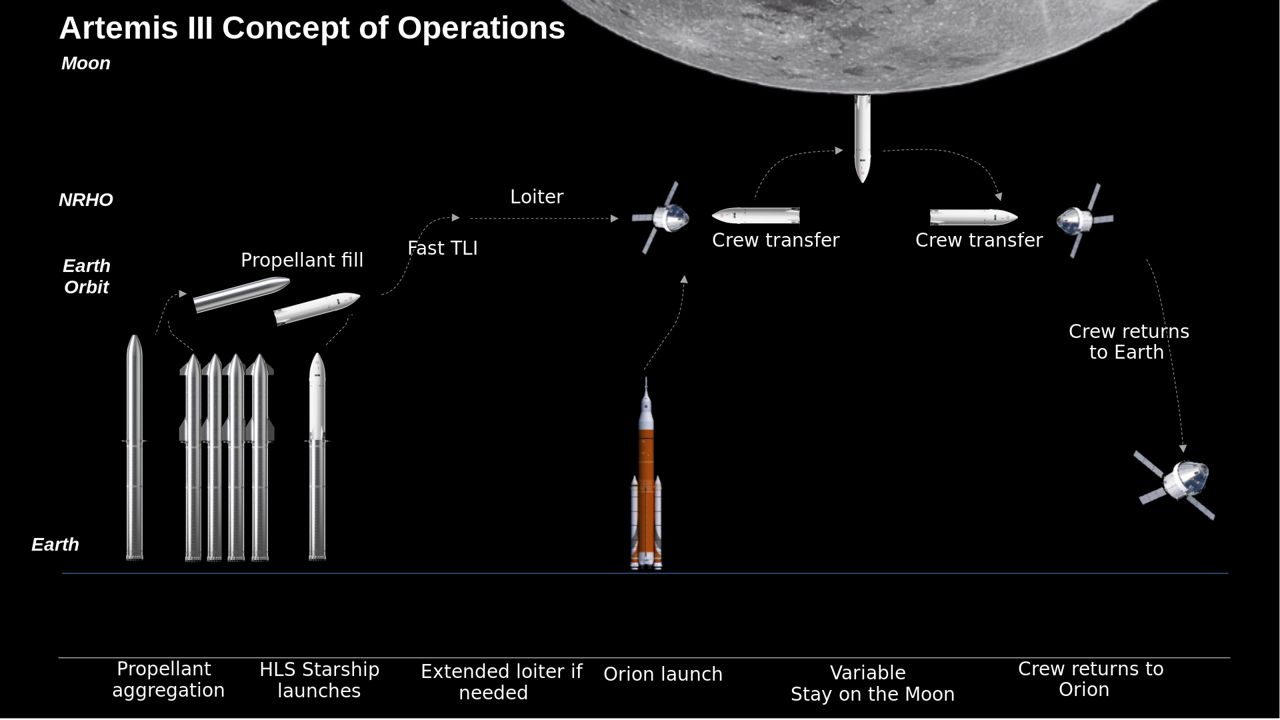
During the press conference, NASA officials said the U.S. space agency’s partners, such as SpaceX, need to deliver. SpaceX recently had its sixth uncrewed test flight of Starship, but it is a long way until it is ready for Artemis III.
Axiom Space has been contracted to create a new space suit to handle the moon’s harsh dust.
Axiom Space’s Extravehicular Activity Program Manager Mark Greeley told Spectrum News in 2023 that his company has all the information it needs for designing the new suits, named Axiom Extravehicular Mobility Unit (AxEMU).






